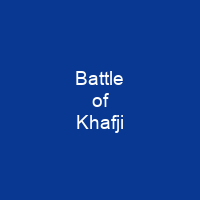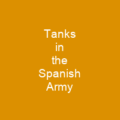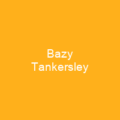The Battle of Khafji: A Turning Point in the Gulf War
Imagine a battlefield where the first major engagement of one of history’s most significant conflicts unfolded. The Battle of Khafji, fought from January 29 to February 1, 1991, was not just a skirmish but a pivotal moment that would shape the course of the Gulf War. Could you believe that this battle, which lasted only three days, would become a symbol of both victory and defeat for opposing forces?
The Prelude: A Strategic Move
Before we dive into the chaos of Khafji, let’s set the stage. Iraqi leader Saddam Hussein had ordered an invasion of Saudi Arabia from southern Kuwait. His goal was to provoke a ground battle by launching Scud missiles against Israel and threatening oilfield destruction in Kuwait. The Battle of Khafji would be the first major ground engagement, setting the tone for what was to come.
The Forces Involved: A Clash of Titans
On one side, we had the Iraqi Army with 350,000-500,000 soldiers organized into 51 divisions, including Republican Guard units. On the other, the Coalition forces deployed over 200,000 soldiers, 750 aircraft, and 1,200 tanks to Saudi Arabia. The Iraqi Third Corps was earmarked for the offensive, with the 3rd Armored Division having upgraded T-55s.
The Plan: A Four-Pronged Offensive
With such a formidable force, Saddam Hussein planned an ambitious four-pronged offensive. One column would occupy Khafji on January 30, while the Iraqi Army aimed to continue the offensive after capturing the city, with the ultimate goal of seizing oil fields at Dammam.
The Battle: A Test of Will and Skill
As units moved towards the Saudi Arabian border, many were attacked by Coalition aircraft. This prevented most Iraqi troops from participating in the offensive. The air campaign targeted command-and-control sites, bridges, railroads, and petroleum storage facilities. It was a strategic move that would prove crucial.
The Observation Posts: A Key to Victory
Coalition forces built observation posts along the Kuwaiti-Saudi Arabian border to gather intelligence on Iraqi forces. The 1st Marine Division had three companies positioned at these posts, while the 2nd Marine Division’s 2nd Light Armored Infantry Battalion set up a screen between observation post 1 and the Al-Wafrah oil fields.
The Occupation of Khafji: A Propaganda Victory
On January 30, the Iraqi offensive began with approximately 2,000 soldiers in armored fighting vehicles moving south towards Khafji. The Gulf War’s first ground engagement occurred near observation post 4, where elements of the Iraqi 6th Armored Brigade engaged Coalition units.
The Battle at Observation Post 4: A Harsh Reality
At OP-4, soldiers received no response to their calls for help and were forced to retreat. Air support arrived in the form of F-15E, F-16C, A-10 Tank Killers, and AC-130 gunships, intervening in a heavy firefight between Iraqi and Coalition ground forces.
The Cost: Friendly Fire and Casualties
One anti-tank vehicle destroyed a friendly LAV-AT but continued to fire on the Iraqi tanks with autocannons. A-10 ground-attack aircraft arrived but found it difficult to pinpoint enemy targets, leading to one of their flares landing on a friendly vehicle, killing its entire crew except for the driver.
The Retaking: A Joint Effort
With observation post 4 cleared, the Iraqi 6th Armored Brigade withdrew over the border under heavy fire from Coalition aircraft. The events at OP-4 were unfolding as another column of Iraqi tanks approached observation post 1. A Company of the 2nd Light Infantry Armored Battalion reported a column of 60–100 BMPs, which was engaged by Coalition A-10s and Harrier jump jets.
The Air Campaign: A Crucial Support
Throughout the night, Coalition air support continued to engage Iraqi tanks and artillery. Despite repeated attacks from an AC-130, the Iraqi advance towards Khafji continued on this sector. The Saudi Arabian commanders called for heavy air strikes but were turned down due to the risk of hitting buildings.
The Final Push: A Joint Offensive
On February 1, the effort to retake the city began anew. The attack was launched at 08:30 hours and met by heavy but mostly inaccurate Iraqi fire. Despite significant risks, the Marines failed to find the two wounded drivers but found a burnt-out Qatari AMX-30.
The Outcome: A Victory for Coalition Forces
During the battle, Coalition forces incurred 43 fatalities and 52 injured casualties. Saudi Arabian casualties totaled 18 killed and 50 wounded. Iraq listed its casualties as 71 dead, 148 wounded, and 702 missing. US sources claim 300 Iraqis killed, with 90 vehicles destroyed.

The Battle of Khafji was a turning point, showing the air power’s supporting role in ground operations. It was a battle that highlighted the strategic importance of intelligence and air support, setting the stage for the larger ground offensive to come.
In conclusion, the Battle of Khafji was more than just a skirmish; it was a testament to the resilience and determination of both sides. The outcome may have been a victory for Coalition forces, but the lessons learned would shape future military strategies and operations. The battle remains a significant chapter in the history of modern warfare.
You want to know more about Battle of Khafji?
This page is based on the article Battle of Khafji published in Wikipedia (retrieved on November 28, 2024) and was automatically summarized using artificial intelligence.







